Adrian Collins's Blog, page 183
February 28, 2021
REVIEW: The Piledriver of Fate by Samuel Gately
The Piledriver of Fate by Samuel Gately takes us back to the pro-wrestling-inspired fantasy world of the Titan Wars. Following reluctant titan Van’s tournament victory in The Headlock of Destiny, book two picks up immediately afterward. As the Overlord (an undead titan and possible homage to WWE’s Undertaker) builds a supernatural army, the beer-loving Van finds himself on the frontlines of a brewing conflict. Pursuing his enemy and missing love interest, the Valkyrie Kyle, the story begins with our protagonist journeying to the hellish underworld of the Nether and facing foes new and old.
 Going in, the biggest question I had was how well this story would handle significantly raised stakes and a central conflict on a much larger scale than its predecessor. And while it is a big leap from the giant-kin wrestling championship of book one to the more epic threat of the Overlord leading his armies from the nightmare realms of the Nether and starting a second Titan War, I think the author handled this transition really well for the most part. This larger conflict is supported by the scaffolding of some A+ character development for both Van and the Overlord, awesome worldbuilding and lore about the titans’ heritage and the giants whose blood they share, and a genuinely unique setting that believably incorporates pro-wrestling into a high fantasy world.
Going in, the biggest question I had was how well this story would handle significantly raised stakes and a central conflict on a much larger scale than its predecessor. And while it is a big leap from the giant-kin wrestling championship of book one to the more epic threat of the Overlord leading his armies from the nightmare realms of the Nether and starting a second Titan War, I think the author handled this transition really well for the most part. This larger conflict is supported by the scaffolding of some A+ character development for both Van and the Overlord, awesome worldbuilding and lore about the titans’ heritage and the giants whose blood they share, and a genuinely unique setting that believably incorporates pro-wrestling into a high fantasy world.
With Van stepping out of the ring and onto the battlefield, grimdark readers will appreciate the notably higher body count and kill-or-be-killed stakes this book features as compared to its predecessor. And while the world of the Titan Wars certainly errs on the side of high fantasy, this novel does have what I thought was a very real and gritty underpinning of the way mankind deals with those it considers ‘other.’ Van and the Overlord’s memories of the all-too-often cruel ways humanity treats titans pose a pleasantly stark question in the narrative: Is mankind really worth defending?
If there was one section of the novel that didn’t work quite as well for me, it was the latter part of Van’s wandering through the Nether. The twisted and desolate land of storms and nightmares is a really cool underworld for Gately’s setting, but it begins to feel too empty and too dreamlike toward the middle of the book’s page count. Some compelling flashbacks to Van’s early life and interactions with the Overlord help, but I felt like this part of the setting didn’t work as well for me as the bustling Empire City. I also had a small issue with a few titan side characters blending together in the background. While many titans like the villainous monarch King Thad and the massive, furious Landshaker remained distinct, others’ shared love of beer, brute force, and bulging muscles made me need to occasionally flip back and forth to keep them sorted.
That said, for all the hulking titan biceps on display, this novel’s biggest muscle is its heart. Gately has a way of nailing all of the important emotional beats from start to finish. Van’s struggles and triumphs—both against the Overlord and frenemy fellow titans—genuinely do carry a feeling of inspiration and victory to the reader. This narrative strength was especially present in an ending that tied off Van’s character arc perfectly and brought a genuine smile to my face.
All in all, I think this novel evolved well from its predecessor while keeping true to its pro-wrestling roots. Good action, creative worldbuilding, and all the fun of a titan-sized smackdown make for a great read, and I think this novel acts as a fitting conclusion to Van’s story (though more Titan Wars books are forthcoming). I would give The Piledriver of Fate ⅘ stars, and I’ll be the first in line to buy ringside tickets to the next entry in the series.
Read The Piledriver of Fate by Samuel Gately
The post REVIEW: The Piledriver of Fate by Samuel Gately appeared first on Grimdark Magazine.
February 27, 2021
REVIEW: The Children God Forgot by Graham Masterton
The Children God Forgot by Graham Masterton is a terrifying story that pulls many of the different horror levers.
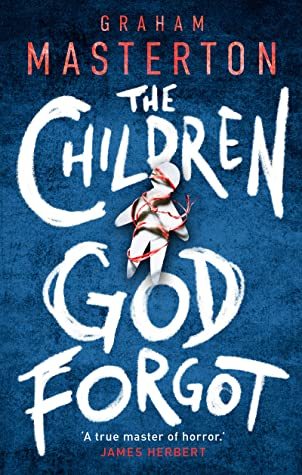 The story starts with pain, visceral stabbing pain in a woman’s belly. The woman in question wakes up in the hospital, completely confused. She finds out she is pregnant, which is impossible. There is no way that she could be pregnant; she had an abortion three months ago. The doctors perform an emergency c-section and deliver a horrifically malformed fetus. One that could not possibly be alive, but it is. Major Cthulu vibes here. Then a rash of strange births and pregnancy sweep through London.
The story starts with pain, visceral stabbing pain in a woman’s belly. The woman in question wakes up in the hospital, completely confused. She finds out she is pregnant, which is impossible. There is no way that she could be pregnant; she had an abortion three months ago. The doctors perform an emergency c-section and deliver a horrifically malformed fetus. One that could not possibly be alive, but it is. Major Cthulu vibes here. Then a rash of strange births and pregnancy sweep through London.
“How much worse could her life become, if she wasn’t even allowed to die?”
Simultaneously, sewage engineer Gemma, owner of the sewage company, and cameraman make a routine check in a section of London’s sewers. As they travel through the engulfing claustrophobic darkness of a sewer pipe, they discover a fatberg, a stony mound of toilet paper, and grease clogging the sewer flow. They also find a severed women’s hand floating in the refuse. Immediately, chaos happens, lights flash, electricity arcs, and the three workers are thrown into utter and complete darkness while trudging through human waste. To say that the moment is something of nightmares would be an understatement.
Up ahead around the pipe bend, the three workers can see child-like figures glowing amongst the waste. Child-like figures made of claws, horribly and inhumanly disfigured, that move with lightning speed. They make a run for it, and all make it out except for Gemma’s boss, who disappears only to be found later with his legs amputated and his eyes ripped from the sockets.
DC Jerry Pardoe and DS Jamila Patel of the supernatural squad team up once again to delve into what is lurking in London’s sewers and if it is going to stop with one dismembered body or if there will be more.
Spoiler alert, there will be more. Because, of course, there will be. Masterton will be Masterton, and it won’t be just one type of horror. He is going to poke and prod every kind of horror with a stick. He makes you squirm and scream and feel sick. I think that you could have a solid horror story of just the sewer part of the story because, especially for someone with claustrophobia…holy shit. But, there is a robust supernatural angle to this story. What are these things that look like malformed children, and who is the woman with the knives that keeps appearing?
Unfortunately, I will have to stop the description there because it will give it away if I say anymore. Imagine something like The Strain, but with occult vibes taking place in a sewer. Now top it all off with a police procedural, and you won’t be far off. Because at the story’s heart is a case that needs to get solved.
The supernatural squad is a competent duo. There is no flash with them, aside from wanting to get to the heart of the case. They had appeared together in the novel Ghost Virus; if you have read that, you would be familiar with the pair. However, reading the previous installment in no way affects your enjoyment of this one.
The Children God Forgot will not be for everyone because this is some deep body horror. It is terrifying. I’d put some trigger warnings, flaying, abortion, claustrophobic spaces; there is a lot. If you can’t make it through the first three chapters of this book, you will not like what is in store. It will only get scarier and darker with a lot more gore. I love horror, and even I had to put the e-reader down now and then. Because, wow, some of these scenes are dark as hell. One particular one included one of these monstrous fetus-creatures eating a cat and tearing it apart with a cracking sound of a broken rib cage—bits of fur flying everywhere. You get the point.
If you love horror of all sorts and want to be scared, The Children God Forgot is for you. Masterton is, well, a master of writing horror. If you are new to his books. Congratulations, you are in for a hell of a ride! I know that some of these scenes will be burned on your brain like Masterton used an actual branding iron; I promise you will recover from the cat scene and a few others soon.
Read The Children God Forgot by Graham Masterton
The post REVIEW: The Children God Forgot by Graham Masterton appeared first on Grimdark Magazine.
February 26, 2021
REVIEW: The Last Kingdom Season 4
The Last Kingdom S4 continues the tale based on Bernard Cornwell’s The Saxon Stories. If you have read my review of the previous season then you will be aware that it was an absolute corker. Whilst not quite hitting the dizzy heights of S3, The Last Kingdom S4 marches forward in a new age for the show as Uhtred’s life continues without his frenemy King Alfred. This means that after three seasons, Uhtred is finally on his way back to Bebbanburg! What could go wrong?
The Last Kingdom S4 finds Uhtred free from the endless pull between Dane and Saxon. He is heading off to Bebbanburg to reclaim his home although King Edward does not support him with soldiers. To the surprise of no one, things don’t go so well for our weary protagonist. With Alfred’s death in season 3, there was an air of closure and the wrapping up of many threads. The Last Kingdom S4 feels like a new beginning with Edward stepping into his father’s shoes and playing the role of sometimes ally/sometimes pompous, petulant prick to Uhtred. A familiar but trusted recipe for the show follows.
The Last Kingdom S4 pushes forward with the brilliant, bloody battles and strong character development that made season 3 such a joy to behold. Sadly, the one flaw with this season is that it never seems certain of who the main antagonist is. Sigtrygger, an intelligent Dane, is convinced to take Winchester by the increasingly manipulative Brida but the Dane is too charming to come off as someone we want to see dead at the hands of our hero. Other antagonists aren’t given enough time to fully develop throughout the season. In fact, only the brilliant Haesten is a consistent villain throughout the season. I must admit to grinning from ear to ear every time the double-crossing Dane showed up – his wit and self-awareness allow him to steal every scene he is in. Like Aethelwold in prior seasons, Haesten has the audience begging for his death but secretly dreading the moment such a wonderful character is gone.
Family and legacy are the themes that binds the ten episodes of The Last Kingdom S4 together. Uhtred’s children are the personification of his split spirit: his son taking the path of a Christian monk and his daughter wishing to live with the freedom and values of the Danes. Some of the strongest scenes in the whole show are with Uhtred struggling to play the good father as his children do what all children do and fight against the smothering bonds he attempts to create. The relationships he has with them are given time to grow over the season and show just how far Uhtred has come since his early days as a rampaging warrior with a lust for battle. He sees King Edward struggling to see the light whilst standing in the colossal shadow of his deceased father and is smart enough to know that capturing Cnut’s children will lead the fiery warrior down a path of his choosing. Even the charming Dane, Sigtryggr, utters to Edward, “I have no children. Nor a wife. This is why I am stronger than you.” The show looks at the relationships of parents and their children and how they can be both a strength and a weakness and it handles such powerful moments with ease and guile.
A slight mis-step with the lack of a clear villain but The Last Kingdom S4 marches forward on the solid foundation of the previous season. The Last Kingdom S4 is packed with interesting characters and brutal battles that we have come to expect from the excellent show. Now to wait for Season 5. I will use the time to read Cornwell’s The Empty Throne which according to Ed is superior to this season’s show. I can’t wait to find out! Destiny is all!
The post REVIEW: The Last Kingdom Season 4 appeared first on Grimdark Magazine.
February 25, 2021
REVIEW: Legacy of the Brightwash by Krystle Matar
Legacy of the Brightwash is the debut novel by Krystle Matar, and it’s an excellent start to a richly detailed world.
 Legacy of the Brightwash follows Tashué Blackwood, a former war hero, now an officer of the Authority. It is his duty to make sure the Tainted—people with powers beyond those of regular humans—are monitored. Those who register can live semi-normal lives, but even then many of their decisions will always be out of their control. They need to work in approved ways for the Dominion, stay under the supervision of Tashué and his colleagues, and may only marry and have children with approved people.
Legacy of the Brightwash follows Tashué Blackwood, a former war hero, now an officer of the Authority. It is his duty to make sure the Tainted—people with powers beyond those of regular humans—are monitored. Those who register can live semi-normal lives, but even then many of their decisions will always be out of their control. They need to work in approved ways for the Dominion, stay under the supervision of Tashué and his colleagues, and may only marry and have children with approved people.
Yes, eugenics. It starts subtly enough, but it’s clear that that’s one of the Dominion’s main strategies for maintaining dominance. Find powerful Tainted, have them breed. If they’re registered, make sure they wed other powerful Tainted. If they’re not registered, or if they’re criminals, put them in the Breeding Program.
Tashué finds a mutilated corpse in the Brightwash, a major river in the city of Yaelsmuir. Her limbs are dismembered, she has tattoos, and no one knew who she was. That plot is the inciting incident of the book, but for much of the book it’s background noise.
Instead, Legacy of the Brightwash shows us the world. It’s a foul case, to be certain, but Tashué has other concerns as well. As a war hero and now an officer, there are discussions of him running for mayor for the city of Yaelsmuir. There’s his neighbour and one of the charges under his supervision, a Tainted whisperer (she takes other people’s pain) he’s falling for despite their power imbalance.
Legacy of the Brightwash starts with a thoughtful and grounded reason the lovers cannot be together. There’s no melodrama to the reason, no ‘star-crossed lovers’ vibe; it’s just a very realistic reason that two people who might have feelings shouldn’t be together. There really is a power imbalance between the two, which is a very valid reason, even if both are interested. Moreover, making the central romance one between two older people who are already single parents worked very well.
The other most important relationship in the book is between Tashué and his son. His son is in a special prison for Tainted who won’t register. For his son, it’s a matter of principle. He doesn’t feel tainted by his powers, and he won’t submit to the Authority, even as his father begs him.
Tashué knows what is best for his son, Jason—give up your principles so you can live. He knows that, and he can’t get through to Jason. Jason, meanwhile, respects his father less than anyone else, and not in an adolescent way. The scenes with Jason, two men on opposite sides of a prison, an officer and a criminal, a father and a son, a collaborator and a resistor, were the beating heart of the novel.
The characters are the highlight of Legacy of the Brightwash. The people in the story are almost all Tashué’s coworkers, or veterans from his war campaign, his family, or the tainted he’s supposed to supervise. They all have long, intricate, but very real relationships with one another.
When the plot does kick into gear, the tension comes not from battle sequences, but from those very human vulnerabilities being played against each other, and those human connections being used for support. The ending felt as if it was the only way this story could have ended.
Overall, Legacy of the Brightwash is a grounded, realistic, and surprisingly dark book, but it’s a book with a fundamentally moral lead that keeps the darkness from feeling gratuitous. I’d recommend it for fans of character-driven, low magic fantasy.
Read Legacy of the Brightwash by Krystle Matar
The post REVIEW: Legacy of the Brightwash by Krystle Matar appeared first on Grimdark Magazine.
February 24, 2021
REVIEW: The Cold Commands by Richard K. Morgan
In The Cold Commands, the second book in the A Land Fit for Heroes trilogy, we rejoin the tale of “hero, dragonslayer, and faggot” Ringil Eskiath. He’s now 31-years-old and there is a price on his head throughout Trelayne following on from his deeds that concluded the events of The Steel Remains. He’s changed dramatically because of his time in the Grey Places, his relationship with the Dwenda Seethlaw, and how their relationship came to its complicated conclusion.
 In addition to Ringil, the other two main point of view characters return from The Steel Remains with the Majek warrior and dragonslayer Egar, and Archeth Indamaninarmal, part-human and part-Kiriath political diplomat. In a similar fashion to the previous novel, I enjoyed reading all the different perspectives of the main trio; but my favourite by far is Ringil’s. In my opinion, I’d say he’s one of the greatest grimdark protagonists I’ve read about yet.
In addition to Ringil, the other two main point of view characters return from The Steel Remains with the Majek warrior and dragonslayer Egar, and Archeth Indamaninarmal, part-human and part-Kiriath political diplomat. In a similar fashion to the previous novel, I enjoyed reading all the different perspectives of the main trio; but my favourite by far is Ringil’s. In my opinion, I’d say he’s one of the greatest grimdark protagonists I’ve read about yet.
‘And how exactly did you come by that murderous little item?’
Ringil reached up and touched the pommel of the Ravensfriend, where it rose at his shoulder. ‘It was forged for me at An-Monal by Grashgal the Wanderer.’
‘Yes – actually, I was talking to the sword.’
I thought that there was occasionally something odd and slightly disorientating about the story’s presentation from the different points of view. For example, one chapter would be following Ringil, then all of a sudden, it would be presenting someone else’s viewpoints on events which seemed to disrupt the flow. I’m not an expert at these devices, so I don’t know if this was intentional by Morgan, but it seemed that there are peculiar switches about ten times or so in the book. It didn’t really affect my enjoyment, yet I did raise my eyebrows and smile wryly here and there due to this.
One element I have really enjoyed in these novels is when both main and supporting characters reflect on their time in, and the current influence of, the previous war with the Scaled Folk. The history is deep and layered and almost feels like Morgan should have another fantasy series out that covers the wartime occasions that are mentioned in these novels. This adds considerable weight to the already complex characters.
‘I like you, Ringil Eskiath, Prophet take me up the arse if I don’t. You’re an arrogant little northern thug, you’re trading on not much more than old war stories, a belly for violence and a few family connections.’ Thin, grim slice of a smile on his lips now. ‘And from what I hear, your bedroom practices wouldn’t bear much scrutiny either. But there it is – I like you. What am I to do?’
Another aspect I like is the presentation and otherworldly feel of the Grey Places. I don’t always comprehend what’s happening or follow this realm’s rules but it is extremely intriguing and full of secrets I’m yet to acknowledge and understand. It’s also interesting to see when revealed, the influence this place is having over Ringil’s character progression. The mystery surrounding the Grey Places, I thought, was a bit like Other’s Island from Robin Hobb’s The Realm of the Elderlings and created similar imagery in my mind.
 I’ll keep my review here pretty short as The Cold Commands is similar in style and design to The Steel Remains, therefore, a lot of what I stated in that review is relevant here also. Morgan’s fantasy world is riveting, the cast of characters is great and I adore the sardonic wit and humour. However, some parts dragged in the middle, there aren’t that many great set-pieces (excluding the finale), and I had no idea where the different storylines were going until about the 80% mark, when, once again, it all seemed to make perfect sense leading up to a belter of a finish.
I’ll keep my review here pretty short as The Cold Commands is similar in style and design to The Steel Remains, therefore, a lot of what I stated in that review is relevant here also. Morgan’s fantasy world is riveting, the cast of characters is great and I adore the sardonic wit and humour. However, some parts dragged in the middle, there aren’t that many great set-pieces (excluding the finale), and I had no idea where the different storylines were going until about the 80% mark, when, once again, it all seemed to make perfect sense leading up to a belter of a finish.
I’d summarise The Cold Commands as being a steady 3-star read that I’ve upgraded the rating of due to its 5-star lead character and the 5-star ending. I found the finale so gripping and exciting that I will be returning to the A Land Fit for Heroes series with The Dark Defiles shortly.
Images from cover and interior art for The Cold Commands (2012, Subterranean Press).
Read The Cold Commands by Richard K. Morgan
The post REVIEW: The Cold Commands by Richard K. Morgan appeared first on Grimdark Magazine.
February 23, 2021
MOVIE REVIEW: Johnny Mnemonic (1995)
I can’t help but think about all the wonderful cyberpunk movies I’ve watched over the years: Robocop, Strange Days, Cyborg 2 (okay, that’s more of a guilty pleasure but so is this). The hands down most cyberpunk of all cyberpunk movies, though, has got to be Johnny Mnemonic. It not only was written by William Gibson but was screwed with by a bunch of soulless corporate suits so it has the cyberpunk pedigree from both sides!
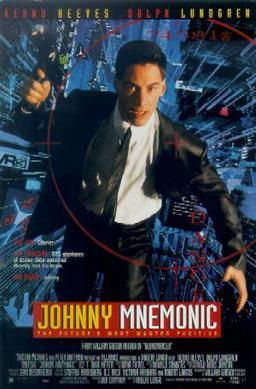 It’s a gonzo sort of movie with laser garrotes, talking dolphins, couriers with flash-drives built into their heads, the Free State of Newark, and cyborgs everywhere. Hell, one of those cyborgs is a transhumanist preacher with a night job as an assassin. This is easily one of the cyberpunk things anyone has ever created and a codifier for many of the concepts to be found inside it. That’s not what I love about the movie, though. No, what I love about the movie is the protagonist: Johnny as played by Keanu Reeves. Why? He is a complete jackass
It’s a gonzo sort of movie with laser garrotes, talking dolphins, couriers with flash-drives built into their heads, the Free State of Newark, and cyborgs everywhere. Hell, one of those cyborgs is a transhumanist preacher with a night job as an assassin. This is easily one of the cyberpunk things anyone has ever created and a codifier for many of the concepts to be found inside it. That’s not what I love about the movie, though. No, what I love about the movie is the protagonist: Johnny as played by Keanu Reeves. Why? He is a complete jackass
How else do you describe this speech being spoken with COMPLETE SINCERITY? “Listen. You listen to me. You see that city over there? THAT’S where I’m supposed to be. Not down here with the dogs, and the garbage, and last month’s newspapers blowing *back* and *forth*. I’ve had it with them, I’ve had it with you, I’ve had it with ALL THIS – *I want ROOM SERVICE*! I want the club sandwich, I want the cold Mexican beer, I want a $10,000-a-night hooker! I want my shirts laundered… like they do… at the Imperial Hotel… in Tokyo. ”
Too many movies feel the need to dumb down their content or provide something like, oh, a softening of a character so we root for him. A softening like, say, a conscience or likability or a tragic backstory. No, Johnny is a selfish high-end criminal who is, at one point, perfectly willing to abandon the woman who saved his life in the garbage as she’s dying from a neurological disorder. Johnny is motivated by money and saving his own ass all the way to the end where he’s only willing to do the right thing because it’s probably literally the last thing he’ll ever do on the planet so why not?
The premise is Johnny is a courier who transports data in a cybernetic implant in his head in order to avoid all the viruses and spyware (though that term hadn’t been invented yet) on the net. Johnny had to remove his childhood in order to get this device installed and is eager to get it back. However, he needs to do the proverbial one last job in order to get the money to do it. This leads him to Hong Kong where a group of scientists install a whopping 300+ gigabytes inside his head, which is more than twice his available capacity. Amusingly, that’s a fairly decent-sized chunk for a digital flash drive and we almost are to the movie’s then-far distant future of 2020.
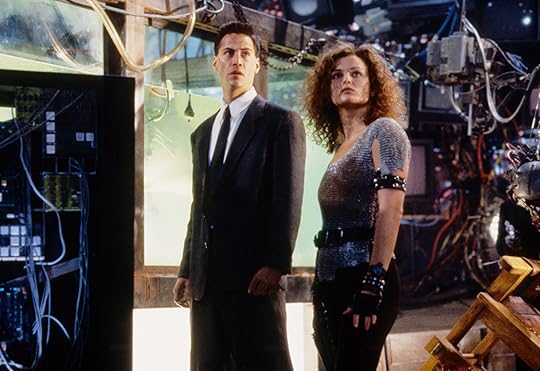
It’s not a spoiler to reveal Johnny is carrying the cure for a neurological disease which is ravaging the world. PharmaCon, who made the cure, has decided they’d rather treat the disease than cure it. Which would be a sound business strategy if not for the fact numerous executives in their service have family members dying from it and it’s probably going to kill off most of the world. I dare say, under those circumstances, the Umbrella Corporation is a model of forward thinking. PharmaCon, unlike the Umbrella Corporation, doesn’t have it’s own military and instead has to employ the Yakuza to be their goon squad.
Johnny is accompanied on his quest by Jane (Dina Meyer), who is supposed to be a badass augmented cyborg but manages to spend much of the movie helpless due to being infected with NAS (the aforementioned neurological disease). I am stupidly in love with Dina Meyer and love the character of Molly Millions (who Jane is supposed to be). However, her portrayal in this movie is average at best. The movie makes Johnny a lot tougher than his literary counterpart and lessens the need for Molly/Jane save as a love interest. Which is a shame because she seems like a cool character, albeit one with terrible taste in men.
 The movie has plot holes you can drive a truck through like the random appearance of an artificial intelligence who may or may not be Johnny’s mom as well as the fact there’s always a bunch of high tech tribals there to rescue Johnny’s ass. Why does PharmaCon want the research for the cure back if they don’t intend to ever use it? Why don’t the bad guys ever just offer to pay Johnny? Why don’t the scientists just broadcast the cure for NAS from the beginning? These are questions you will ask, right up until you just accept the movie for the illogical set piece for what it is: a sci-fi B-movie guilty pleasure.
The movie has plot holes you can drive a truck through like the random appearance of an artificial intelligence who may or may not be Johnny’s mom as well as the fact there’s always a bunch of high tech tribals there to rescue Johnny’s ass. Why does PharmaCon want the research for the cure back if they don’t intend to ever use it? Why don’t the bad guys ever just offer to pay Johnny? Why don’t the scientists just broadcast the cure for NAS from the beginning? These are questions you will ask, right up until you just accept the movie for the illogical set piece for what it is: a sci-fi B-movie guilty pleasure.
The special effects are charming at best, laughable at worse, with the action being less than inspiring. However, the sheer weirdness of this movie is what saves it. Johnny may be an asshole but he’s an understandable one since we all wish we were an ultra-rich douchebag who cares only about himself (or is that just me?). Dina Meyer is sincere with her character and I liked Jane despite her flaws. The other characters are all memorable and there’s not a single one which I didn’t come to like before the end–even the despicable ones. This is cyberpunk at its most shameless and that goes a long way with me.
The vision of the world is an enormous trash heap which isn’t so much a post-apocalypse vision of the future as a past-its-expiration-date. The United States has fallen, Japan has taken over the world, and everyone has failed to notice because they’re too busy wrapped up in their own greed. It’s a delightfully Dark Age vision of a technological dystopia and probably this movie’s strongest suit. Well, that and a man actually wields a laser garrote in his thumb that he also uses as a whip.
I recommend for those who want to see a film where Keanu Reeves gives his best but cheesiest performance. So, ready your VCRs to record sensitive data, folks, and enjoy an utterly crazy film. Available on Amazon Prime and recently released on a no-frills Blue Ray.
The post MOVIE REVIEW: Johnny Mnemonic (1995) appeared first on Grimdark Magazine.
February 22, 2021
REVIEW: The Black Coast by Mike Brooks
Large in size, and ambitious in scope, The Black Coast (book one in the God-King Chronicles) perfectly lives up to the saying, “Slow and steady wins the race”. While it did not contain as much action as I was expecting, it was still a fascinating read.
 The main storyline of this book features two separate cultures trying to coexist peacefully. A clan of the Tjakorsha people have just shown up at the Black Keep. Normally, that is cause for huge concern, as the Tjakorsha are raiders. However, in this instance, something has changed: the Black Eagle Clan is hoping to settle alongside the people of the Black Keep and live peaceably. Daimon of the Black Keep goes against the wishes of his law-father to allow this, adding an extra level to this already-unique plotline. This meshing of two very separate cultures makes for an engrossing story. There is no lack of danger or action, but the main risk is with two very different cultures attempting to mesh and live side-by-side.
The main storyline of this book features two separate cultures trying to coexist peacefully. A clan of the Tjakorsha people have just shown up at the Black Keep. Normally, that is cause for huge concern, as the Tjakorsha are raiders. However, in this instance, something has changed: the Black Eagle Clan is hoping to settle alongside the people of the Black Keep and live peaceably. Daimon of the Black Keep goes against the wishes of his law-father to allow this, adding an extra level to this already-unique plotline. This meshing of two very separate cultures makes for an engrossing story. There is no lack of danger or action, but the main risk is with two very different cultures attempting to mesh and live side-by-side.
There is much more to The Black Coast than just a joining of two cultures, and this is where things got a little muddy for me. I wanted so much to like the other storylines, especially that of Tila, a political mastermind with a double life (which I will not spoil by discussing). Unfortunately, they failed to suck me in. While the world is huge, with unique cultures, traditions, and speech patterns, I was left feeling a little overwhelmed by it all. It was a bit much for me to keep track of, and I’m sure I missed something important. It didn’t matter in the long run, though, because the Black Keep storyline was so interesting.
The Black Coast seems to be a book that is entirely set up for the rest of the series. I was left intrigued but feeling like I was still waiting for things to start. Another book that I had a similar reaction to was The Dragonbone Chair, the first book in the Memory, Sorrow, and Thorn series by Tad Williams. As with that book, I have a feeling that The Black Coast is ramping up to what will be an amazing series, one that rewards patience. Go into this book expecting a slow buildup, epic worldbuilding, and a lot to mull over.
Read The Black Coast by Mike Brooks
The post REVIEW: The Black Coast by Mike Brooks appeared first on Grimdark Magazine.
February 21, 2021
REVIEW: Remote Control by Nnedi Okorafor
In Remote Control by Nedi Okorafar, Sankofa, the one who sleeps at deaths door, the remote control, arrives at a remote town in Ghana. The people are terrified of this 14 year old girl who only looks 10 and can make herself glow deadly green. They feed her. They clothe her. They wish her gone and hope is not then she is here to kill.
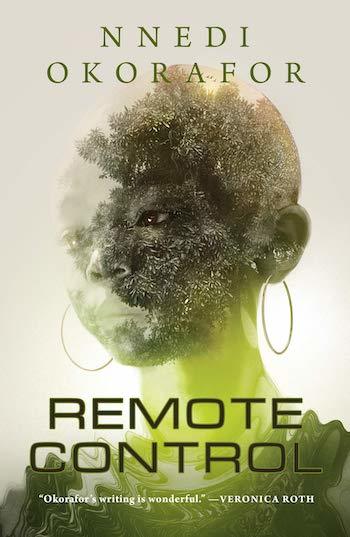 Sankofa walks through town after town, followed by her fox Movenpick, who is unaffected by her ability to snuff out life within a heartbeat. The story is one of wandering. Sankofa has somewhat accepted a life of loneliness, of no technology, and of sleeping under the stars as she searches for the seed, the original source of her power and her curse. All along she is predominantly feared and loathed and misunderstood, but she finds good people along the way.
Sankofa walks through town after town, followed by her fox Movenpick, who is unaffected by her ability to snuff out life within a heartbeat. The story is one of wandering. Sankofa has somewhat accepted a life of loneliness, of no technology, and of sleeping under the stars as she searches for the seed, the original source of her power and her curse. All along she is predominantly feared and loathed and misunderstood, but she finds good people along the way.
The way the American family is written juxtaposed against the African town and people at the start is really interesting and brilliantly done. It helps a simple Sydneysider like me who knows admittedly little about the history and culture and people of Africa, quickly acclimatise myself with the setting and the people.
in Remote Control, Okorafar shows you this amazingly detailed world so well through the eyes of a child. Whether Sankofa is six or 14, the POV feels real and well realised. And it grows. I feel many authors who try to write children really struggle to land the POV and and the protagonist’s understanding of the world properly and consistently. Little errors slip in revealing the adult behind the words. Okorafar does not suffer this problem. The point of view delivery of the story is utterly seamless.
The ending is like a warm, loving, grimdark slap in the face. It comes out of nowhere and it works brilliantly and everything leads to it and I loved it. It’s a brilliant twist where all the learning, the lack of control over her life and her power, all comes full circle in just a few brilliant paragraphs that had my jaw flopping on the floor. I can’t wait till somebody else I know reads this because I need to have a discussion about that ending.
Remote Control is another excellent novella release from Tor.com, and my introduction to this brilliant author. It’s full of heart, heartbreaking, revealing, and has one of the most enjoyable and brutal last page twists I’ve read in a long time.
Read Remote Control by Nnedi Okorafor
The post REVIEW: Remote Control by Nnedi Okorafor appeared first on Grimdark Magazine.
February 20, 2021
REVIEW: A Memory Called Empire by Arkady Martine
A Memory Called Empire by Arkady Martine is an expertly crafted science fiction fantasy novel that incorporates real-world cultures into the intricate Aztec Empire influenced mythos. It is shining, and immersive and should be read, and read often.
“This book is dedicated to anyone who has ever fallen in love with a culture that was devouring their own.”
 Right from the first pages of the story, you know that you are reading something different, and doing a little research into author Arkady Martine I instantly knew why. Martine is by profession a historian and city planner. The city planning part thrilled me to no end as I once upon a time was also a city planner. She has many prestigious degrees, one of which is a Ph.D. in medieval Byzantine, global, and comparative history at Rutgers University. When you read this book you will notice the incredible care and detailing that went into the language and worldbuilding of the Teixcalaani Empire with obvious influences from the pre-colonial/conquest Aztec Empire as well as influences from the Nahuatl languages. The Nahuatl language group is currently spoken by close to two million people in central Mexico and was spoken by the Aztecs.
Right from the first pages of the story, you know that you are reading something different, and doing a little research into author Arkady Martine I instantly knew why. Martine is by profession a historian and city planner. The city planning part thrilled me to no end as I once upon a time was also a city planner. She has many prestigious degrees, one of which is a Ph.D. in medieval Byzantine, global, and comparative history at Rutgers University. When you read this book you will notice the incredible care and detailing that went into the language and worldbuilding of the Teixcalaani Empire with obvious influences from the pre-colonial/conquest Aztec Empire as well as influences from the Nahuatl languages. The Nahuatl language group is currently spoken by close to two million people in central Mexico and was spoken by the Aztecs.
“Released, I am a spear in the hands of the sun.”
Often you read science fiction and fantasy novels that are based on or influenced by a particular culture. They usually only “pay lip service” to that culture. Authors delve deep enough historically and sociologically to have a general understanding of that culture enough to be as respectful and authentic as they can in the depiction with varying degrees of success. I think that what is so exceptional about A Memory Called Empire, and why it won the Hugo award for best novel and a finalist for the Nebula for the same category is that instead of superficially glancing at the culture, it is intensely immersive. The world-building in this story flows like rain flowing to the ocean. Every detail was imagined and it coalesced into a much greater picture of the history, city planning, and generally the Teixcalaani. There were no moments in which the detailing was off that it threw me out of the story.
“A MIND is a sort of star-chart in reverse: an assembly of memory, conditioned response, and past action held together in a network of electricity and endocrine signaling, rendered down to a single moving point of consciousness”
The story follows the protagonist Mahit Dzmare. She arrives as an ambassador to the imperial city of Teixclaan as a representative of the space station Lsel. She is to advocate on behalf of her fiercely independent homeland of Lsel Station and investigate the death of the previous ambassador. The Teixcalaani is a glorious golden empire that swallows and changes everything it touches. It is beautiful to behold, but so much so that places like Lsel Station will get swallowed by its magnitude. Mahit is new to her ambassadorial duties, although she has studied the Teixclaan culture, language, and history for most of her life. But studying something, and living it are two very different things. She must figure out a way to protect the independence of her small homeworld in the face of everything.
Martine does an excellent job in representing the feelings of Mahit being a stranger in a strange land. Everything is foreign to Mahit right down to customs of facial expressions and food. She desperately needs to belong, and assimilate into this foreign culture but she can’t because she is missing a very important piece of information. One of the important pieces of hardware that the people of Lsel station use is a device called an imago. The device is the memory and personality of people who have come before her, saved as data to be re-downloaded. It is used so that none of the experiences and aptitude of the Lsel citizens is lost at the death of the person. The experience is then added to the new wearer and the personalities are blended.
Nothing is lost. But, for Mahit her imago is malfunctioning. The previous ambassador’s memory and experiences are gone. She is a fish out of water. Without the experiences and knowledge of her predecessor, how is she supposed to do this?
As befits her station, Mahit is assigned a cultural liaison named Three Seagrass. The naming conventions in this story are spectacular. Three Seagrass, while not the main protagonist of the story, is hugely important to the narrative and often steals the scenes with her wit, and systematic efficiency. She is brutally efficient. As Mahit surfs the political intrigue of the city Teixclaan and its people, she must not be pulled under.
“I could have told her the truth,” Mahit said. “Here I am, new to the City, being led astray by my own cultural liaison and a stray courtier.” Twelve Azalea folded his hands together in front of his chest. “We could have told her the truth,” he said. “Her friend, the dead Ambassador, has mysterious and probably illegal neurological implants.” “How nice for us, that everyone lies,” Three Seagrass said cheerfully.”
There is a lot going on in this book. Right from the get-go, Mahit is thrown into a world of political intrigue. This book is called a space opera, but the genre title is misleading, as it often is. I think A Memory Called Empire is more than a genre label just as Dune is more than a genre label. A Memory Called Empire is visually lush and politically compelling. Martine builds a world through history, language, culture, and great characters.
A Memory Called Empire is a deep science fiction story that asks questions on what is the nature of memory. What is memory? Can it be taken away? Is memory the collective history of a full culture like that of the Teixcalaani people or a moment of a single individual? It can be so many things. At the same time, while A Memory Called Empire delves into what memory is it also has a complicated mystery plot of “who done it” laced with wordplay, culture, and political intrigue. There are even cyberpunk elements laced into the story which is hard to believe, but they work with the narrative perfectly.
The plotting of the story is swift. It moves from scene to scene with no lag and propels the narrative forward. Honestly, the story just got better and better as it continued.
“Nothing touched by Empire stays clean.”
A Memory Called Empire had me stopping and evaluating my thoughts on what memory actually is many times. It is a story that can be taken in sips or devoured for hours at a time. It is glorious and shining like the golden city of Teixcalaani. It has made me remember why I love science fiction as much as I do.
For all those readers who love deep, well-written, and intelligent science fiction and fantasy, A Memory Called Empire should leapfrog all other books on your to-be-read list for your immediate attention.
Read A Memory Called Empire by Arkady Martine
The post REVIEW: A Memory Called Empire by Arkady Martine appeared first on Grimdark Magazine.
LGBTQIA+ Dark SFF Characters: Where To Start Reading
The world has changed to be more inclusive, and SFF has often led the way by taking us into worlds and people that push our comfort zones and expand our horizons. Many new works that have come out in recent years have main character representation of LGBTQIA+ characters.
So if you are asking questions like, “Where do I start reading characters more like me?” or “Where are the LGBTQIA+ characters in adult dark fantasy?” the Grimdark Magazine team has you covered.
Let’s get reading!
Docile by K.M Szpara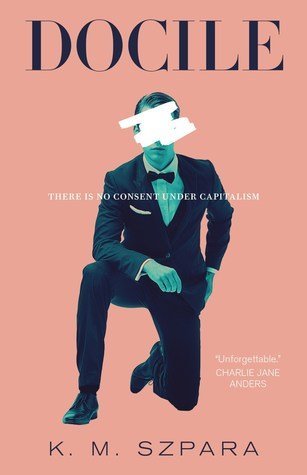 What it is about?
What it is about?There is no consent under capitalism
Docile is a science fiction parable about love and sex, wealth and debt, abuse and power, a challenging tour de force that at turns seduces and startles.
To be a Docile is to be kept, body and soul, for the uses of the owner of your contract. To be a Docile is to forget, to disappear, to hide inside your body from the horrors of your service. To be a Docile is to sell yourself to pay your parents’ debts and buy your children’s future.
Elisha Wilder’s family has been ruined by debt, handed down to them from previous generations. His mother never recovered from the Dociline she took during her term as a Docile, so when Elisha decides to try and erase the family’s debt himself, he swears he will never take the drug that took his mother from him. Too bad his contract has been purchased by Alexander Bishop III, whose ultra-rich family is the brains (and money) behind Dociline and the entire Office of Debt Resolution. When Elisha refuses Dociline, Alex refuses to believe that his family’s crowning achievement could have any negative side effects—and is determined to turn Elisha into the perfect Docile without it.
Why You Should Read This?Read Docile by K.M. Szpara“This is a queer dystopian novel that is sometimes uncomfortable to read, extremely graphic in nature, is thrilling, beautifully written and yet is often a mind-fuck and has quite a few trigger warnings to discuss.“
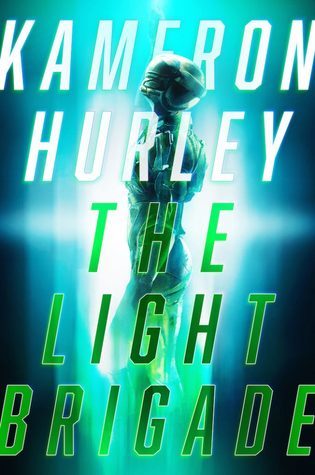
From the Hugo Award–winning author of The Stars Are Legion comes a brand-new science fiction thriller about a futuristic war during which soldiers are broken down into light in order to get them to the front lines on Mars.
They said the war would turn us into light.
I wanted to be counted among the heroes who gave us this better world.
The Light Brigade: it’s what soldiers fighting the war against Mars call the ones who come back…different. Grunts in the corporate corps get busted down into light to travel to and from interplanetary battlefronts. Everyone is changed by what the corps must do in order to break them down into light. Those who survive learn to stick to the mission brief—no matter what actually happens during combat.
Dietz, a fresh recruit in the infantry, begins to experience combat drops that don’t sync up with the platoon’s. And Dietz’s bad drops tell a story of the war that’s not at all what the corporate brass want the soldiers to think is going on.
Is Dietz really experiencing the war differently, or is it combat madness? Trying to untangle memory from mission brief and survive with sanity intact, Dietz is ready to become a hero—or maybe a villain; in war it’s hard to tell the difference.
A worthy successor to classic stories like Downbelow Station, Starship Troopers, and The Forever War, The Light Brigade is award-winning author Kameron Hurley’s gritty time-bending take on the future of war.
Why You Should Read This?Read The Light Brigade by Kameron Hurley“The Light Brigade is a mind-fuck. In fact, I’m finding it hard to gather my thoughts about it because it’s just… it’s a lot. ::insert reactionary gif of a brain exploding:: It’s brilliant and weird and just fucking brutal as hell. I adored all of the references that were sprinkled throughout, although I’m sure I missed even more. GAH!! I loved this book so goddamn much!”
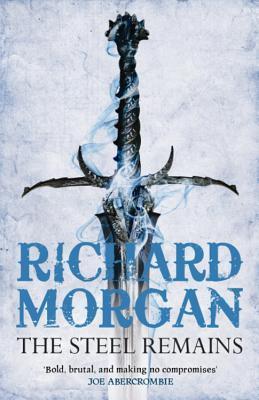
A dark lord will rise. Such is the prophecy that dogs Ringil Eskiath—Gil, for short—a washed-up mercenary and onetime war hero whose cynicism is surpassed only by the speed of his sword. Gil is estranged from his aristocratic family, but when his mother enlists his help in freeing a cousin sold into slavery, Gil sets out to track her down. But it soon becomes apparent that more is at stake than the fate of one young woman. Grim sorceries are awakening in the land. Some speak in whispers of the return of the Aldrain, a race of widely feared, cruel yet beautiful demons. Now Gil and two old comrades are all that stand in the way of a prophecy whose fulfillment will drown an entire world in blood. But with heroes like these, the cure is likely to be worse than the disease.
Why You Should Read This?Read The Steel Remains by Richard K Morgan“I thought Ringil was a brilliant character and after reading a few of his chapters I decided to buy the next two books in the series as I knew I was going to be fully invested in him. Ringil reminded me of Sapkowski’s Geralt of Rivia with his temperament and I often envisaged grunts or “for-fuck-sakes” before he acted.”
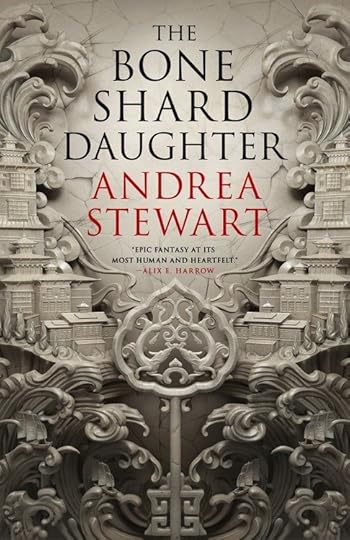
In an empire controlled by bone shard magic, Lin, the former heir to the emperor will fight to reclaim her magic and her place on the throne.
The emperor’s reign has lasted for decades, his mastery of bone shard magic powering the animal-like constructs that maintain law and order. But now his rule is failing, and revolution is sweeping across the Empire’s many islands.
Lin is the emperor’s daughter and spends her days trapped in a palace of locked doors and dark secrets. When her father refuses to recognise her as heir to the throne, she vows to prove her worth by mastering the forbidden art of bone shard magic.
Yet such power carries a great cost, and when the revolution reaches the gates of the palace, Lin must decide how far she is willing to go to claim her birthright – and save her people.
Why You Should Read This?Read The Bone Shard Daughter by Andrea Stewart“There are several points of view found throughout the book. Lin’s storyline is arguably the most important. She is the daughter of the Emperor, desperate to prove her worth to her father and earn his trust. Only by discovering his secrets can she hope to someday succeed him and lead his empire. However, the more she tries to learn, the more dangerous those secrets become. The lies build up, and he has eyes everywhere. He is a dangerous man to cross, and Lin needs to find a way to survive his machinations and figure out what he is hiding. I have to say, I was absolutely stunned by where Lin’s storyline ended up. However, while Lin was technically the main character in the book, I found myself only sort-of invested in her character until about halfway through. Once her plotline got going, it raced along at a breakneck pace, but it took longer to get there than I would have liked.”
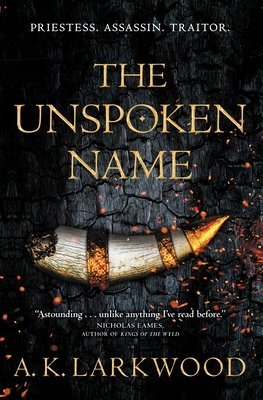
What if you knew how and when you will die?
Csorwe does — she will climb the mountain, enter the Shrine of the Unspoken, and gain the most honored title: sacrifice.
But on the day of her foretold death, a powerful mage offers her a new fate. Leave with him, and live. Turn away from her destiny and her god to become a thief, a spy, an assassin—the wizard’s loyal sword. Topple an empire, and help him reclaim his seat of power.
But Csorwe will soon learn – gods remember,
and if you live long enough, all debts come due.
Why You Should Read This?Read The Unspoken Name by A.K. Larkwood“Her life’s only meaning is in its death. In the last hour of her life, she is approached by the wizard Sethennai, a wizard, he offers her a choice, “serve me, and I will save you. Don’t and accept your fate.” Csorwe, having never been offered a choice in anything, she is offered what could be the most pivotal choice of her life. She accepts life and defies a god. She takes her young life and runs for it. Sethennai needs Cswore to restore his position as ruler of a great city named Tlaanthothe. It is difficult as a reader to make the connection as to why Csorwe, basically a babe in the ways of the world, is essential in this great wizard’s quest to gain his city back. Especially since, again, Cswore is groomed as an assassin and bodyguard, and it takes years to get her ready. And, still, what looks like a choice and an opportunity to live her life finally on her own terms is not what she thinks it is. She is bound to Sethennai by obligation and her honor.”
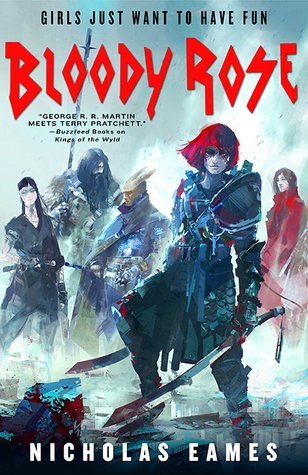
Live fast, die young.
Tam Hashford is tired of working at her local pub, slinging drinks for world-famous mercenaries and listening to the bards sing of adventure and glory in the world beyond her sleepy hometown.
When the biggest mercenary band of all rolls into town, led by the infamous Bloody Rose, Tam jumps at the chance to sign on as their bard. It’s adventure she wants – and adventure she gets as the crew embark on a quest that will end in one of two ways: glory or death.
It’s time to take a walk on the wyld side.
Why You Should Read This?Read The Bloody Rose by Nicholas Eames“Bloody Rose has so many excellent qualities, it’s impossible to include them all in this review (since you should be reading the book by now anyhow). But for the purpose of brevity, let’s look only at characters and themes. Fable comprises Tam, the bard; Bloody Rose, the leader and daughter of the famous mercenary Golden Gabe from Kings; Freecloud, Rose’s rabbit-eared lover, a druin; Brune, a shapeshifting vargyr; Cura, an Inkwitch; and Roderick, a hilarious and horny satyr. Each of these characters is imbued with a distinctive personality and each character has its own arc that is perfectly executed and timed (spread out with) the other characters’ arcs. Brune for example, has always believed he is a bear until circumstances require that he overcome that misperception to survive. Equally as important as the expert development of Fable’s band members is the development and deployment of the very powerful and intelligent villain, the Winter Queen, who has a legitimate motivation to be pissed off—her only son was killed by Rose’s father at Castia. Bloody Rose has an enormous cast of important characters, and they are all intricately tied together, not only by the story’s events, but also by its main themes.”
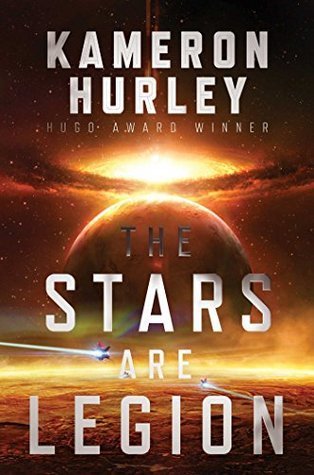
Somewhere on the outer rim of the universe, a mass of decaying world-ships known as the Legion is traveling in the seams between the stars. For generations, a war for control of the Legion has been waged, with no clear resolution. As worlds continue to die, a desperate plan is put into motion.
Zan wakes with no memory, prisoner of a people who say they are her family. She is told she is their salvation – the only person capable of boarding the Mokshi, a world-ship with the power to leave the Legion. But Zan’s new family is not the only one desperate to gain control of the prized ship. Zan finds that she must choose sides in a genocidal campaign that will take her from the edges of the Legion’s gravity well to the very belly of the world.
Zan will soon learn that she carries the seeds of the Legion’s destruction – and its possible salvation. But can she and her ragtag band of followers survive the horrors of the Legion and its people long enough to deliver it?
In the tradition of The Fall of Hyperion and Dune, The Stars are Legion is an epic and thrilling tale about tragic love, revenge, and war as imagined by one of the genre’s most celebrated new writers.
Why You Should Read This?Read The Stars are Legion by Kameron Hurley“The world-building in The Stars are Legion is what really pulled me into the story in the beginning. Unlike most sci-fi that I have read, the world of The Stars are Legion is almost entirely organic. The world-ships, of which there are primarily three in the story, are gigantic floating, tentacled living worlds with a seemingly unknown number of levels from the bottom, where people are recycled by terrifying monsters, all the way to the top, where the elite and powerful live and conspire. The entire world-ship is organic, made of some kind of fleshy substance that can be cut through to form new passageways, and eaten, if entirely necessary. It is alive with tubes like umbilici, and growths, and blood, and on the outside, a blackening cancerous rot, evidence that the worlds are dying and will continue to do so. Beneath it all, or at least in parts, are some mysterious metal beams and scaffolding that may have been part of the original structure or used to sure up the dying organic structure.”
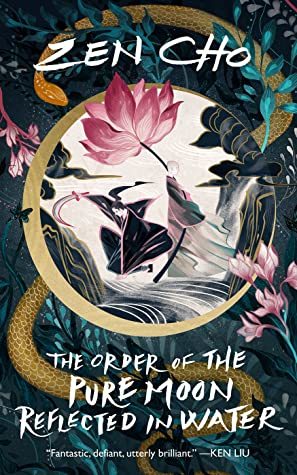
Zen Cho returns with a found family wuxia fantasy that combines the vibrancy of old school martial arts movies with characters drawn from the margins of history.
A bandit walks into a coffeehouse, and it all goes downhill from there. Guet Imm, a young votary of the Order of the Pure Moon, joins up with an eclectic group of thieves (whether they like it or not) in order to protect a sacred object, and finds herself in a far more complicated situation than she could have ever imagined.
Why You Should Read This?Read The Order of the Pure Moon Reflected in Water by Zen Cho“On the surface, The Order of the Pure Moon Reflected on Water is a pretty grim tale about hapless, hungry bandits trying to survive amid poverty, war, and tyranny. In this sense, it is like a lot of grimdark novels and novellas and is pretty much standard grimdark fare. But Zen Cho is so fucking funny that the story becomes as darkly humorous it is grim and pathetic. It’s rare balance that I’ve found only a few times in the likes of Rob Hayes’s Never Die, Mark Lawrence’s Red Queen’s War, and several of Abercrombie’s novels. Not only is the narrator subtly humorous, but the characters are freaking hilarious, mostly unintentionally, often delightfully crudely.”
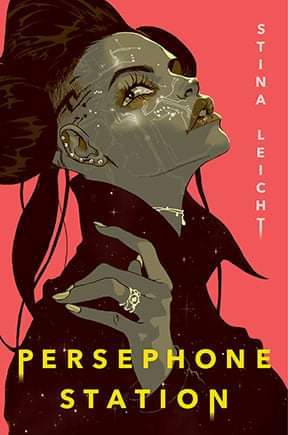
Hugo award-nominated author Stina Leicht has created a take on space opera for fans of The Mandalorian and Cowboy Bebop in this high-stakes adventure.
Persephone Station, a seemingly backwater planet that has largely been ignored by the United Republic of Worlds becomes the focus for the Serrao-Orlov Corporation as the planet has a few secrets the corporation tenaciously wants to exploit.
Rosie—owner of Monk’s Bar, in the corporate town of West Brynner—caters to wannabe criminals and rich Earther tourists, of a sort, at the front bar. However, exactly two types of people drank at Monk’s back bar: members of a rather exclusive criminal class and those who sought to employ them.
Angel—ex-marine and head of a semi-organized band of beneficent criminals, wayward assassins, and washed up mercenaries with a penchant for doing the honorable thing—is asked to perform a job for Rosie. What this job reveals will affect Persephone and put Angel and her squad up against an army. Despite the odds, they are rearing for a fight with the Serrao-Orlov Corporation. For Angel, she knows that once honor is lost, there is no regaining it. That doesn’t mean she can’t damned well try.
Why You Should Read This?Read Persephone Station by Stina Leicht“Persephone Station has everything a grimdark fan could want in a science fiction novel. The characters are outcasts, heavily armed and highly flawed. They face a powerful force on a suicide mission against all odds. Though the main characters are undoubtedly on the side of good in this novel, they are assassins and mercenaries who take the job for the money and for their friend. They fight with spaceships and mech suits and rail guns and pulse rifles and bombs and all kinds of good stuff. People get injured and killed. The settings are grim and perilous. The action is tense and fast, extremely interesting, logical, and vivid.”
Read our review here | Check Out An Excerpt Here
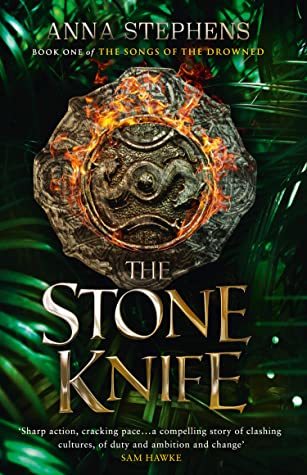
A fantasy epic of freedom and empire, gods and monsters, love, loyalty, honour, and betrayal, from the acclaimed author of GODBLIND.
For generations, the forests of Ixachipan have echoed with the clash of weapons, as nation after nation has fallen to the Empire of Songs – and to the unending, magical music that binds its people together. Now, only two free tribes remain.
The Empire is not their only enemy. Monstrous, scaled predators lurk in rivers and streams, with a deadly music of their own.
As battle looms, fighters on both sides must decide how far they will go for their beliefs and for the ones they love – a veteran general seeks peace through war, a warrior and a shaman set out to understand their enemies, and an ambitious noble tries to bend ancient magic to her will.
Why You Should Read This?Read The Stone Knife by Anna Stephens“It is far more complicated than I can describe here, but at 600+ pages, readers can expect a very deep and engaging read that harkens back to the real doorstopper novels that reward the committed reader with a depth and complexity of characters, relationships, conflicts, and emotions that cannot be achieved in novels and novellas of shorter lengths.”
The post LGBTQIA+ Dark SFF Characters: Where To Start Reading appeared first on Grimdark Magazine.



